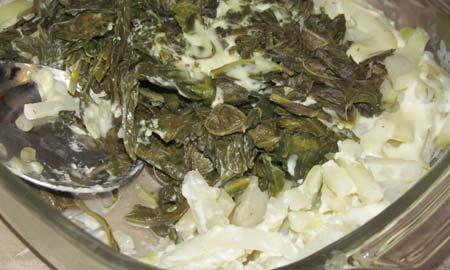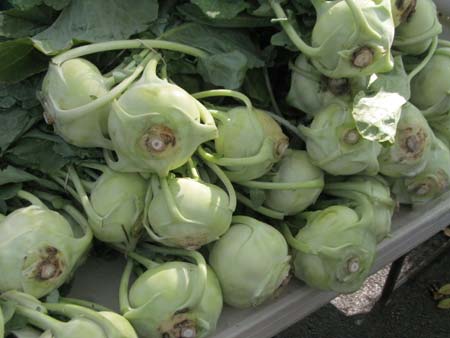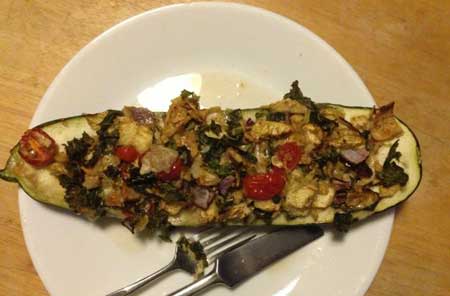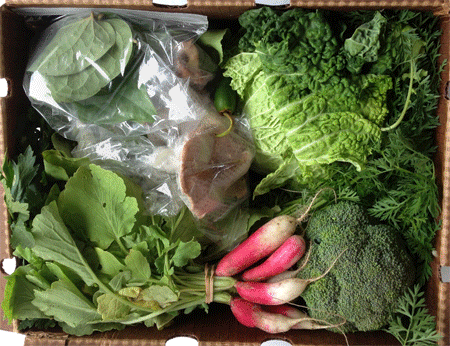Earlier in September, I conducted an email interview with farmer Margie Pikarsky about the Oriental Fruit Fly quarantine, and how it impacts the Bee Heaven Farm CSA and the upcoming Redlands GrowFest!
Q: How does this quarantine affect Bee Heaven Farm and the CSA? What are you growing that’s affected?
MP: Luckily, this is just as farmers are gearing up for the start of the winter growing season, there is not much exposure to row crops, and plenty of time to put preventive treatment programs in place before harvesting begins of susceptible crops like squashes, tomatoes and beans. We are starting treatment with Spinosad as soon as we can get our hands on it, beginning the 30-day countdown.
As far as BHF, we’re essentially done with avocado harvest. Carambolas will be dehydrated, seagrapes are already harvested and frozen awaiting delivery, items previously harvested were already delivered. Guavas will be pulped and frozen or dehydrated, allspice berries have been harvested and frozen.
I don’t anticipate much problem with the CSA. I have to take precautions with incoming listed items (they are kept in protected storage, coolers are sealed), offloaded when they’re going to be packed, and packed and transported in a protected manner, in a sealed truck). Listed veggies include squashes, tomatoes, eggplant, peppers, beans.
Q: How does the quarantine affect the upcoming Redland GrowFest!?
Seedlings and fruiting plants that are currently NOT bearing fruit are not controlled. So we can sell our seedlings with no problem. Fruit trees, as long as they are stripped of any fruit (no matter how tiny), can be sold as well, so GrowFest! will be able to go off with minimal disruption.
In fact, listed items coming in from outside the quarantine area (currently, Health and Happiness Farm, Verde Farm, and Paradise Farms, for example, are outside the QA), can be sold, as long as they are protected. Displays can be protected by using a screened enclosure or other covering (this applies to fruit stands). The screening cannot touch the fruit, and the mesh has to be <4mm. I’m sure we’ll think of creative ways to pre-pack/bag listed items, but remember a lot of things like baby greens and herbs, for example, will not require any special handling.
Q: How long is this quarantine in place?
MP: The quarantine is in place for a minimum of 2 life cycles of the fly. First one is 30 days, second one is 32. If a third is needed, it would probably be 45 days, as their life expectancy lengthens with lower temperatures.
Q: What do you and other growers in the quarantine area have to do?
MP: Everyone within the quarantine area is asked to meet with FDACS OFF eradication program inspectors and enter into a compliance agreement, which spells out what they need to do. There are separate sections for growers (including homeowners), harvesters, packers, shippers, processors, lawn service/tree maintenance, sellers and dealers, charity (gleaners, soup kitchens), etc.
If you are outside the quarantine area, it’s business as usual, except that a) you have to protect any listed product going into or transiting through the quarantine area, you cannot receive listed product grown within the quarantine area without proof of treatment and compliance, and it must arrive fully protected (safely enclosed).
If you are inside the quarantine area, you cannot move listed product off your property unless it has been treated. There are 2 options: a) pre-harvest treatment for 30 days (with no positive finds near you during that time), or b) post-harvest treatment.
Post harvest treatments are limited here. Organic growers essentially have only the pre-harvest treatment option open. Chilling is an option, but unrealistic, except perhaps for carambola. There are a couple of other possibilities. You can consume the items on-site. You can process the items (freeze, dry, cook, grind), and then they are free to move off-farm and out of the quarantine area.
Other options that may be available to non-organic growers may include a combination of cold and fumigation, but it looks like only a fumigation treatment is available for avocados, as they cannot take cold storage in the temps or times required. TREC is looking at some short treatments. If they achieve kills and they can replicate the results, they may be able to approve it.
Q: Where did they find the fruit fly, and when?
MP: The core of the quarantine area is 1.5 miles around the positive finds. They are pretty much within about 1/2 mile of each other, roughly centered around 100-200 Avenues between 180-188 Streets. In these areas, multiple male flies were trapped (the highest something like 45 in 1 day). There were a couple of locations where larva were found. There was a female trapped as well.
In the areas around positive finds, anything on the list is stripped of fruit. The fruit is disposed of in an approved manner that prevents contamination. Traps to catch females are set. Soil surrounding positive finds is drenched with an approved pesticide (there are three, one of which is a Spinosad product approved for use in organic production), and surrounding trees are sprayed with the treatment (which is a bait). Male pheromone traps and female yeast traps re placed in the area. Utility poles are also sprayed up high. The OFF is a strong flyer.
Q: What else do CSA members and farm customers need to know about the OFF?
MP: The biggest single thing I’d say is: unless it’s already processed (jams and jellies, baked in bread, etc) don’t give away fruit, don’t accept fruit from someone else. Don’t say “I’m going to take this because it’s fine. Look, there’s no bugs on it! He’s my friend and I know he takes care of his plants. One will be OK.” No. This fly doesn’t care how well you take care of your plants, and you can’t see the eggs inside the fruit. It has no natural enemies here.
This is ONLY for a limited time. It’s imperative we get rid of this fly. It’s absolutely the worst pest. I’m sure most folks have heard about the Medfly – well, the list [of host plants] for that is maybe 20 lines long. The list for this fly is 13 PAGES long! Every fruit you can imagine is on it, every fruiting vegetable is on it, and many ornamentals too – even Ylang Ylang, for example.
We cannot allow this fly to become established here, because if it does, it will be truly devastating. So everyone tighten their belts for a couple of months and work together to do this.









